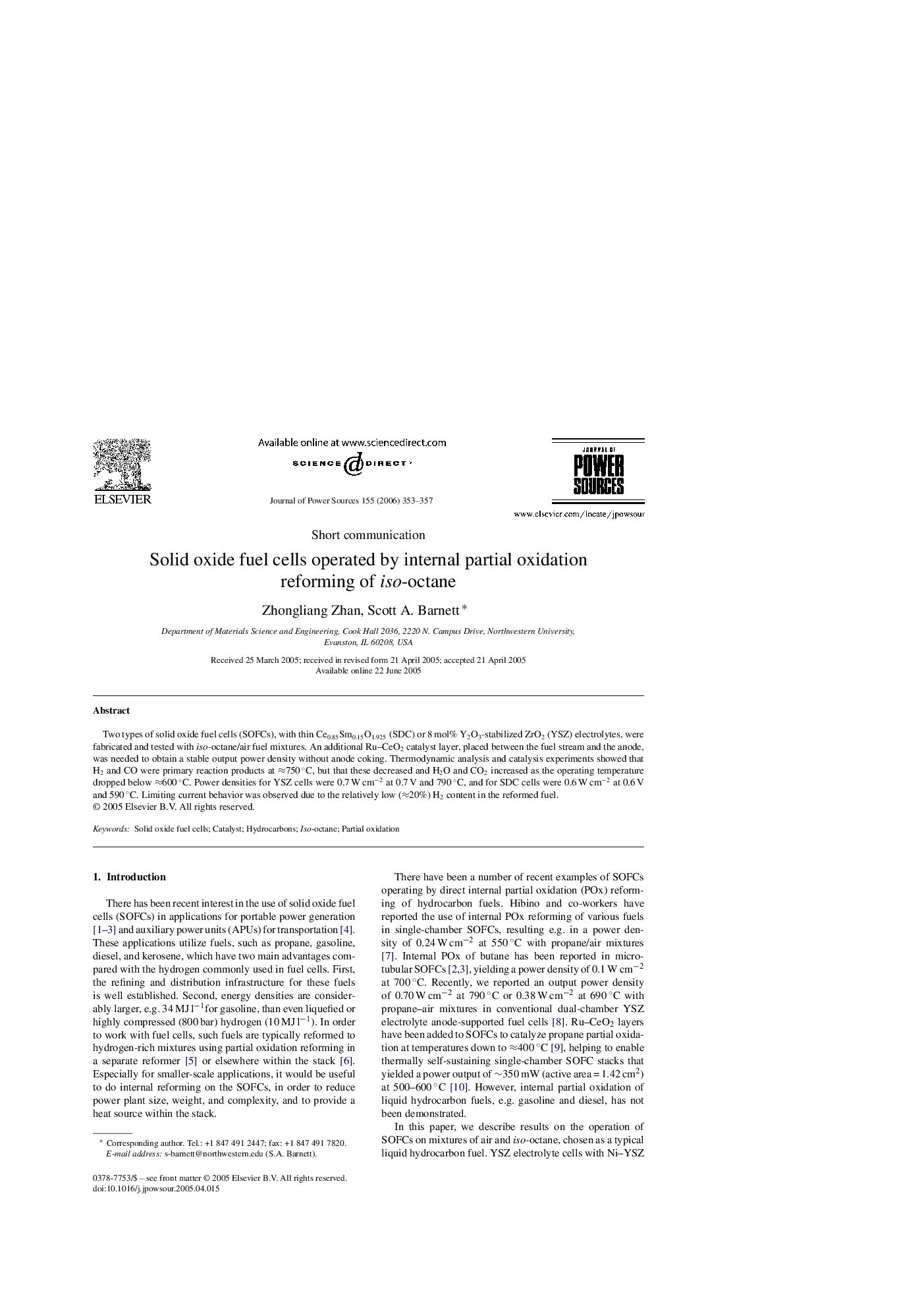| Article ID | Journal | Published Year | Pages | File Type |
|---|---|---|---|---|
| 1287911 | Journal of Power Sources | 2006 | 5 Pages |
Two types of solid oxide fuel cells (SOFCs), with thin Ce0.85Sm0.15O1.925 (SDC) or 8 mol% Y2O3-stabilized ZrO2 (YSZ) electrolytes, were fabricated and tested with iso-octane/air fuel mixtures. An additional Ru–CeO2 catalyst layer, placed between the fuel stream and the anode, was needed to obtain a stable output power density without anode coking. Thermodynamic analysis and catalysis experiments showed that H2 and CO were primary reaction products at ≈750 °C, but that these decreased and H2O and CO2 increased as the operating temperature dropped below ≈600 °C. Power densities for YSZ cells were 0.7 W cm−2 at 0.7 V and 790 °C, and for SDC cells were 0.6 W cm−2 at 0.6 V and 590 °C. Limiting current behavior was observed due to the relatively low (≈20%) H2 content in the reformed fuel.
